From Vadstena to Visingsö: Along the shore of Lake Vattern
Travel writer and photojournalist Bo Zaunders often reaches back in history to shape the itineraries of his expeditions. This two-part account of a journey through Ostergotland in south central Sweden is no exception. Part 2: Heading south toward Visingsö
-
 Ombergs Turisthotell on Lake Vättern’s eastern shore — between Vadstena and Gränna at the beautiful stretch where beech forest meets the expansive view of Vättern and the Östgöta plain.
Ombergs Turisthotell on Lake Vättern’s eastern shore — between Vadstena and Gränna at the beautiful stretch where beech forest meets the expansive view of Vättern and the Östgöta plain. -
-
Arriving at Ombergs Turisthotell, a few miles south of Vadstena, we found ourselves once again in the era of Heidenstam. The hotel, built 100 years ago with support of Ellen Key, another literary luminary, sits on a hill with lush vegetation and boasts a lovely view of Vättern and the surrounding countryside. Inside and out, it exuded an air of Carl Larsson and turn-of-the-century Sweden: pastel colors and lots of white furniture. And the view was always present, from the broad terrace that seemed to stretch around the entire building to the dining room with its huge multi-paneled windows.
-
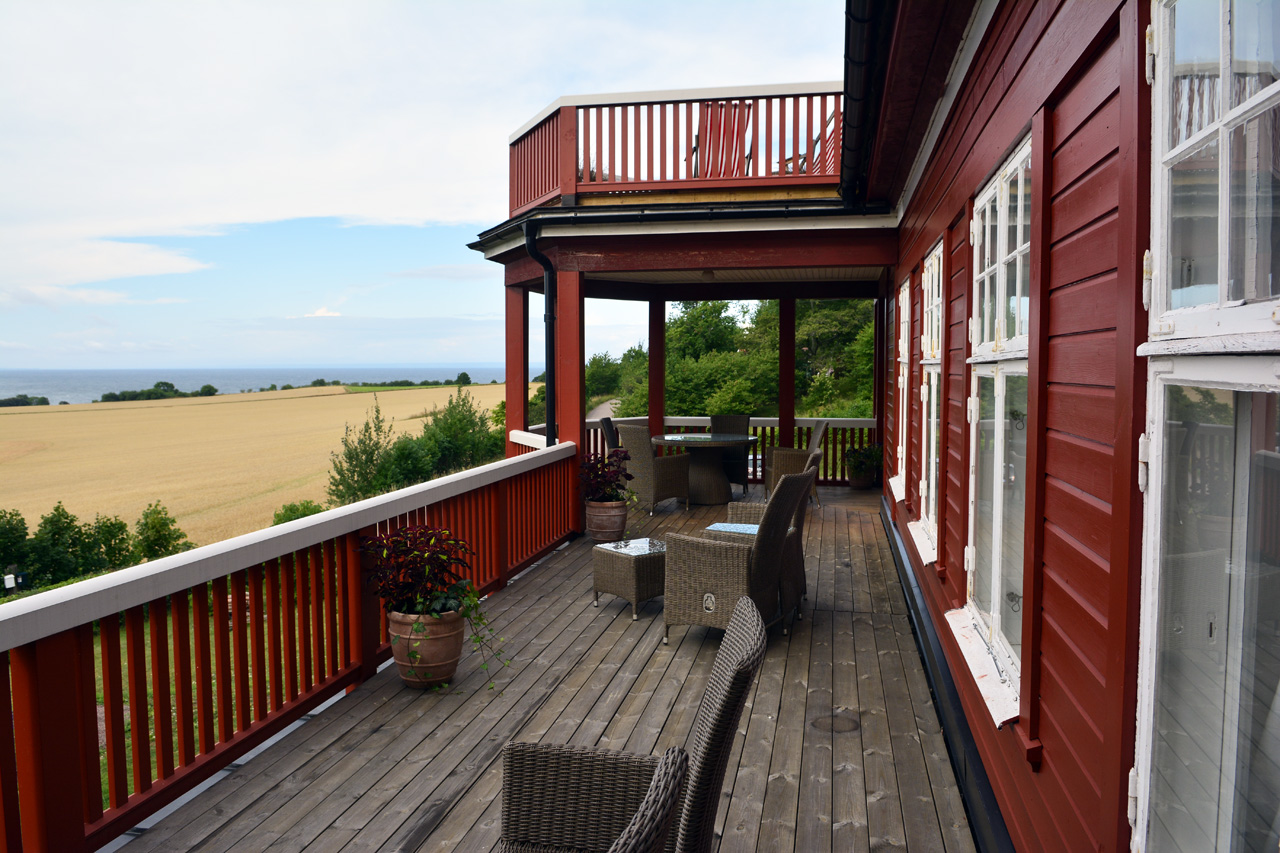 Ombergs Turisthotell on Lake Vättern’s eastern shore.
Ombergs Turisthotell on Lake Vättern’s eastern shore. -
-
The next day we planned to visit neighboring Strand, the home of Ellen Key, which, like that of Heidenstam’s, has been turned into a museum. But right now we were making ourselves comfortable in the hotel, chatting with chef Marcus Larsson and his wife Pernilla, who together with his brother Jonas and sister Linda, bought the hotel about six years ago ago and now run it.
-
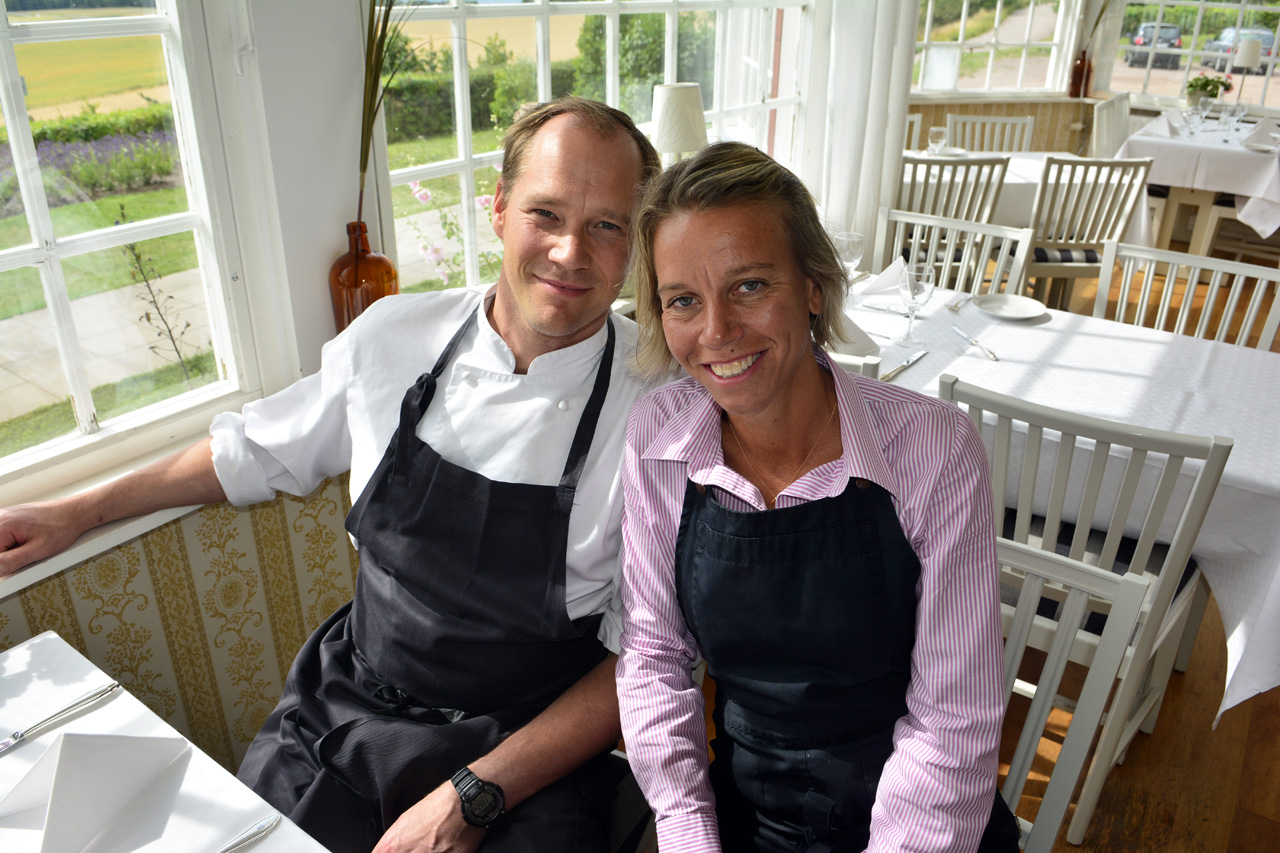 Chef Marcus Larsson and his wife Pernilla.
Chef Marcus Larsson and his wife Pernilla. -
Dinner was about to begin. A selection of opening tidbits stretched almost the entire length of a long table. After that came an exceptional, most creative cucumber soup poured over a small piling of char, bleak roe and sour cream. A tenderloin brisket of beef followed, with brown sauce, carrots and potato purée. As for wine, we began with a glass of white Bordeaux and continued with Valpolicella, an Italian red. And we must not forget the dessert: a cheesecake with rhubarb, raspberries and white chocolate — given a maximum five-star review by Roxie, who is generally not that crazy about sweets.
-
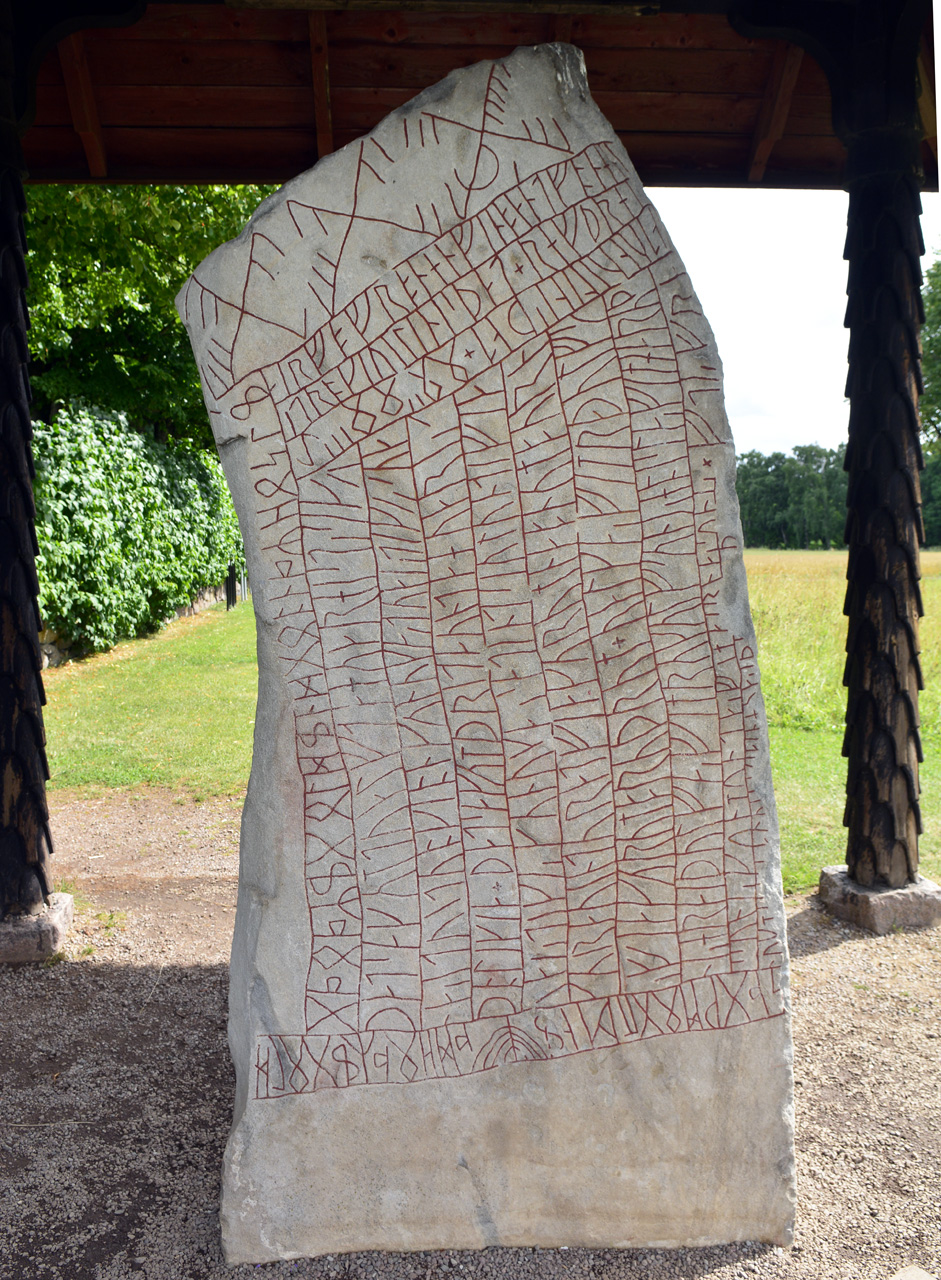 Rökstenen, from the early 800s, stands some 8 feet tall.
Rökstenen, from the early 800s, stands some 8 feet tall. -
At Strand, Ellen Keys’ home, Carl Larsson's presence could once again be felt. As it happened, the famous painter and his wife Karin were both close friends of Ellen and presumably had something to do with the way she decorated her house.
-
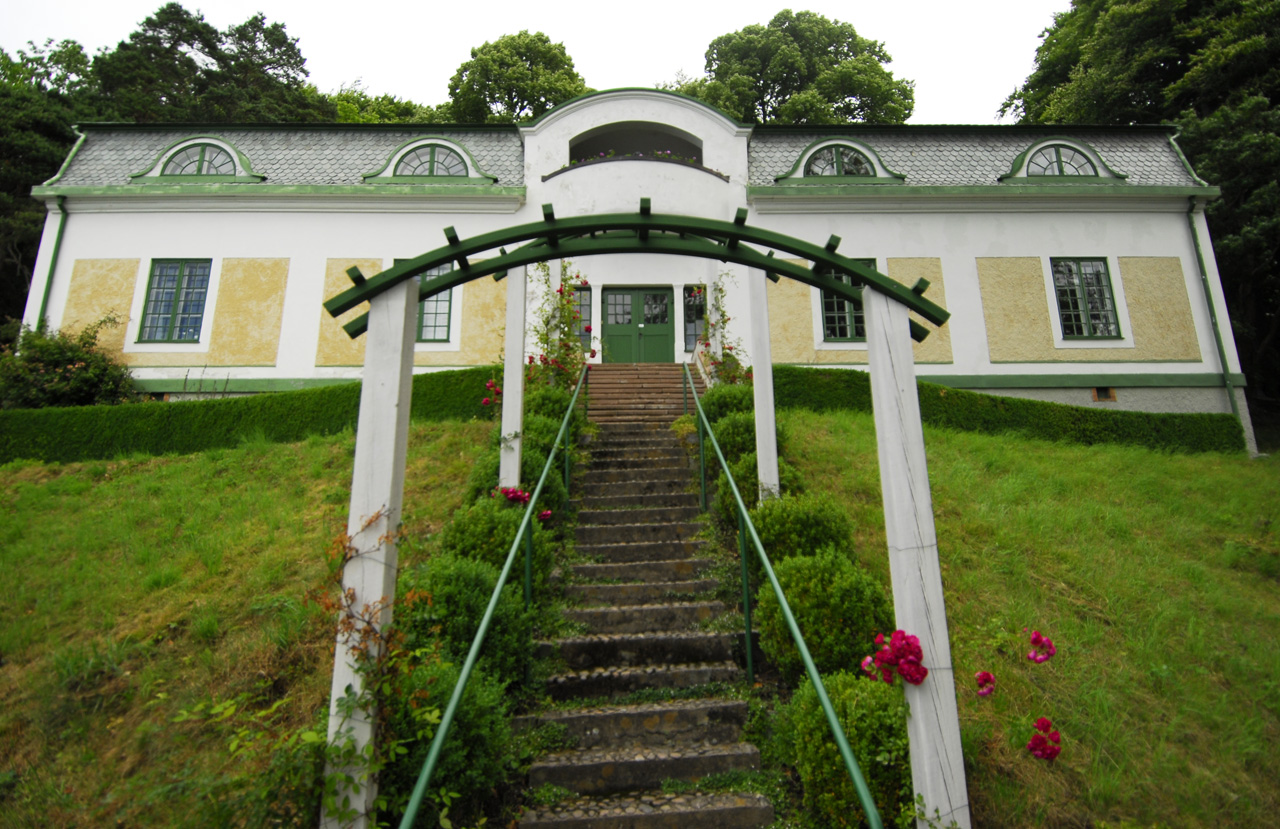 Ellen Key’s Strand.
Ellen Key’s Strand. -
Like Heidenstam, Ellen Key is no longer much talked about these days. And like him, she was once one of the most prominent writers in the country. An early feminist and suffragist with strong political views on most subjects, she’s best known for her book Barnets århundrade, “The Century of the Child,” which has been translated into 26 languages and reprinted many times. It contains her ideas on education and school problems, many of which are so modern that they are only now being put into practice.
-
 The interior of Ellen Key’s Strand.
The interior of Ellen Key’s Strand. -
In it she emphasizes the importance of allowing children to specialize in subjects of their own choosing, not be spoon fed with humdrum knowledge, and since young people should be able to grow up without fear, she takes a firm stand against all forms of corporal punishment. A sought-after lecturer, she traveled extensively, especially in Germany; Goethe was one of her idols, as were Henrik Ibsen and Bjørnstjerne Bjørnson, both of whom were also dear friends.
Key lived in Strand from 1910 until her death in 1926. According to her wishes, the house was turned into a summer home for indigent working women, and has today become a place where adult female students can engage in study and meditation during the summer.
As curator Hedda Jansson guided us from room to room, I took note of a couple portraits of Key, one of which was by the well-known painter Richard Bergh. Apparently he was another good friend. “To Ellen from Dick,” he had written on a print of his famous painting of the poet Gustaf Fröding, also on display in this remarkable Lake Vättern homestead. -
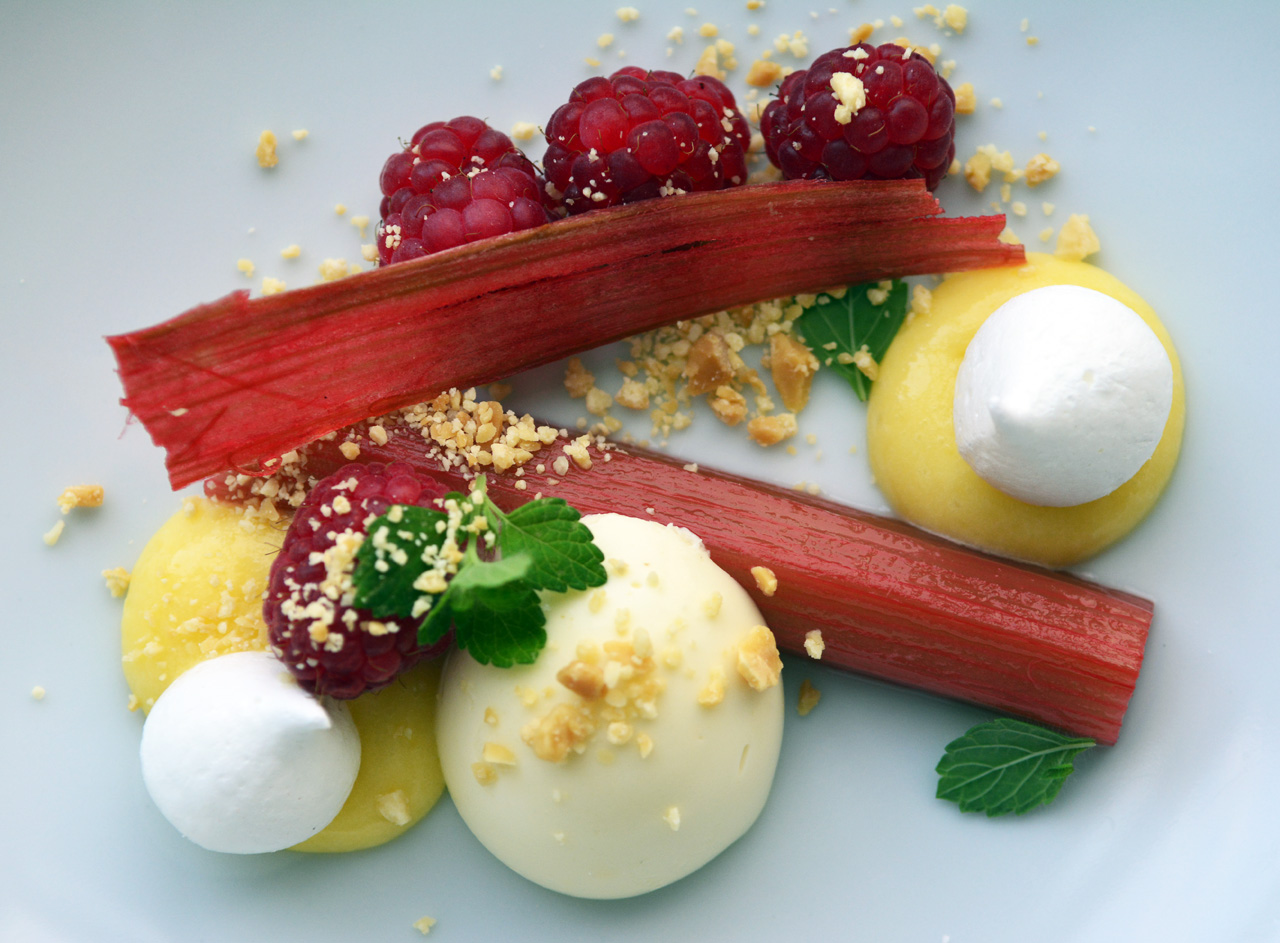
-
Before continuing to UrNatur, a most unusual accomodation, we paid a visit to Rökstenen, a rune stone from the early 800s, boasting the longest and arguably most difficult-to-decipher rune inscription in the world (I remember seeing it featured in the New Larousse Encyclopedia of Mythology). A great tourist attraction, it’s some 8 feet tall and stands under a protective roof near the church in which it was discovered. Adjacent to it is a Viking-inspired shop and café, complete with a woman in Viking garb.
-
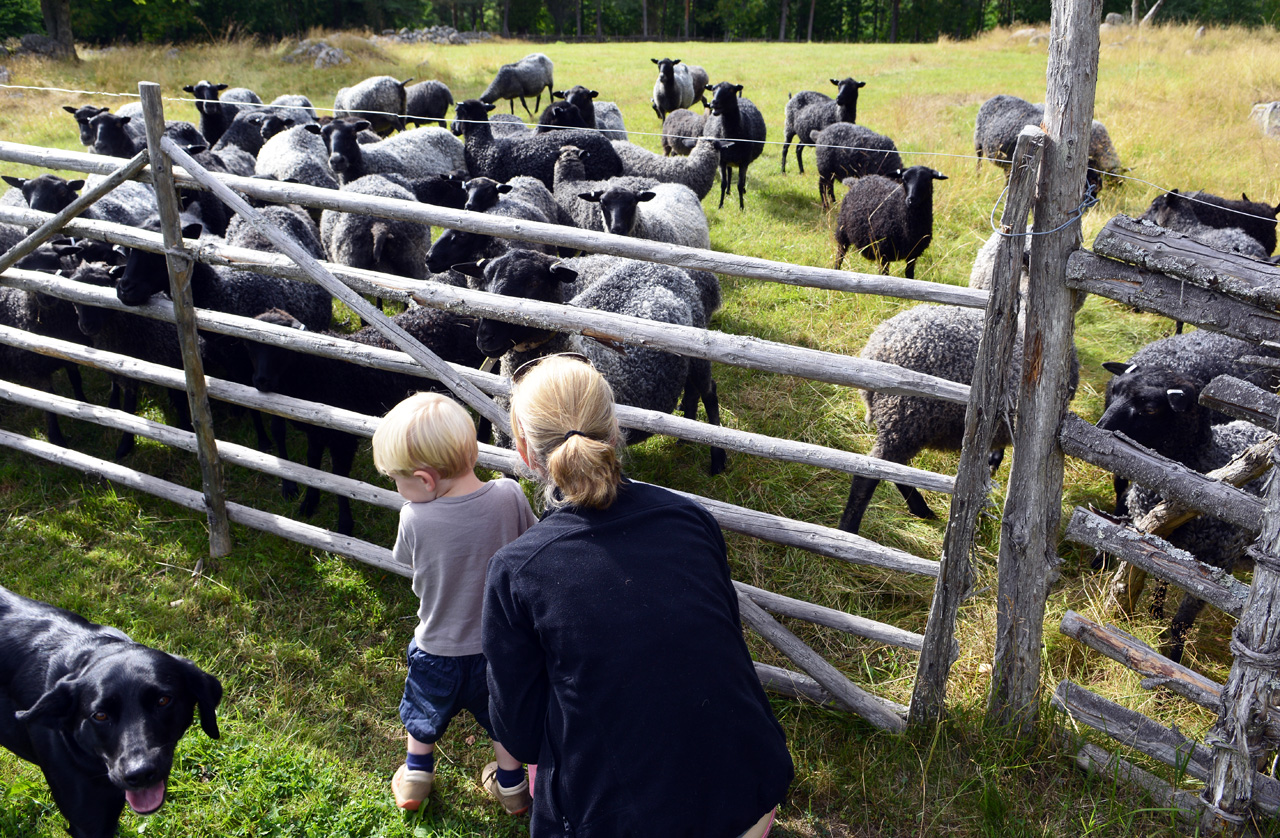
-
Once again a married couple in charge of running a place! This time it was Håkan Strotz and Ulrika Krynitz, he a Swedish forester and she a German biologist and designer, both with a “back to the future “ dream, which slowly but surely has become a reality at UrNatur.
It began 20 years ago when they bought a 100-acre farm. In the midst of meadows and forests and next to a small lake, it suited their purposes to perfection. A forest hermitage evolved, a poem to Swedish nature, and what could be termed the epitome of eco tourism — where everything is driven and inspired by nature and sustainability. -
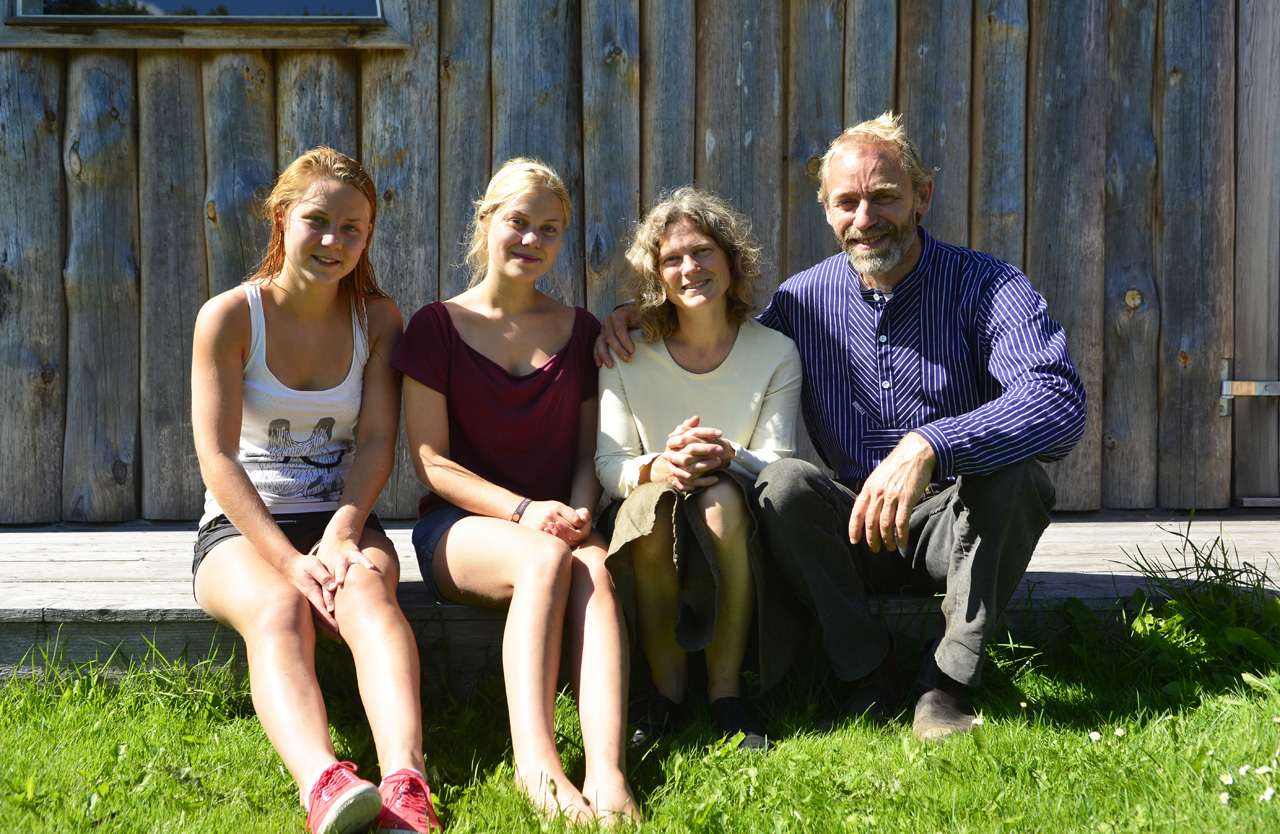
-
UrNatur, which roughly translates to “essence of nature,” is now the perfect place for relaxation and reflection. Here, without electricity, in the soft light of a kerosene lamp, you can sit by the fireplace, listen to the crackle of wood burning and to the soft wind in the trees outside. Each residence is a unique handcrafted cabin with an evocative name, such as Hat Cabin, the Charcoaler’s Hut, Wolf Cot, Pilgrim’s Hut, Little Tree House and Air Castle.
-
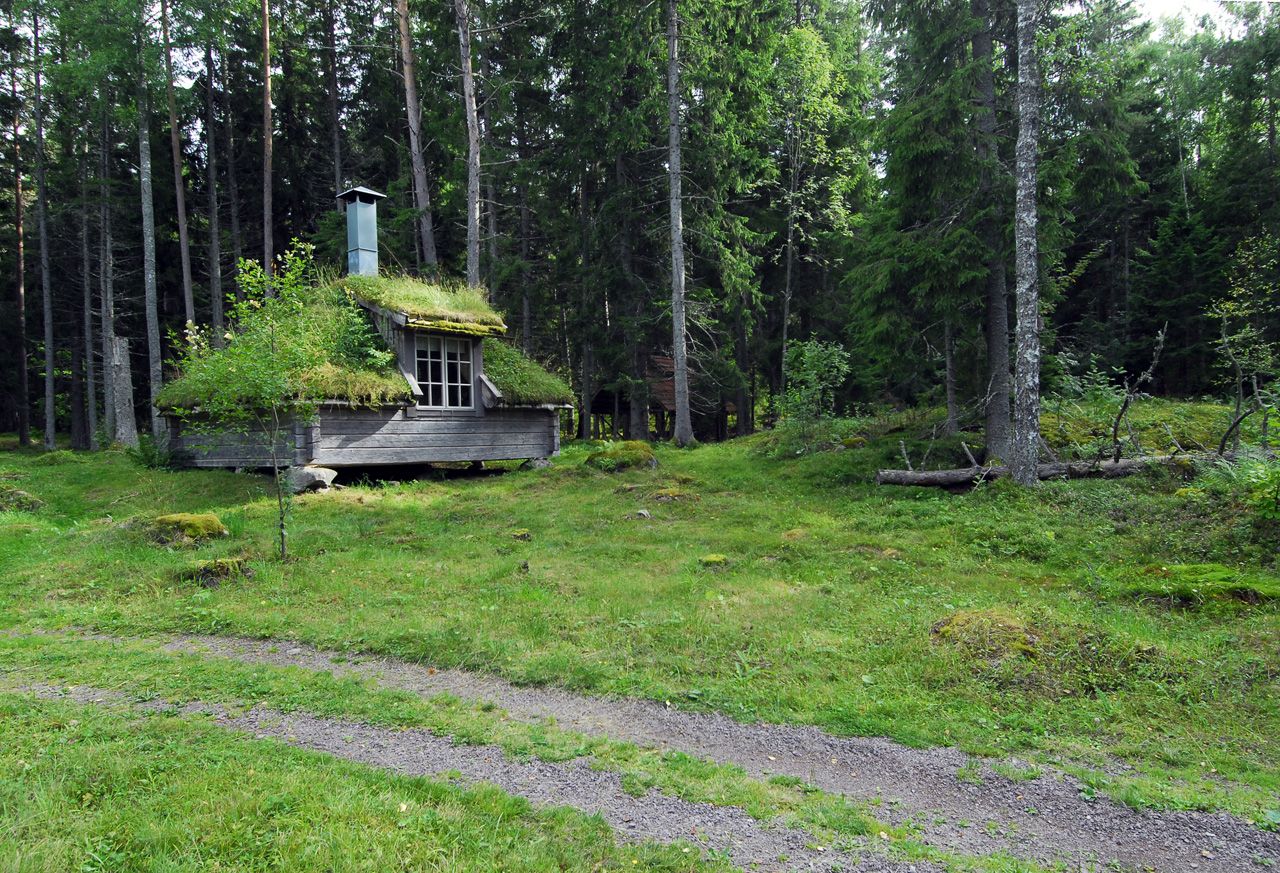 Some accommodations at Urnatur.
Some accommodations at Urnatur. -
On our arrival, Håkan was there to greet us. Subsequently, we and a few other guests were hoisted onto a cart and taken to our respective cabins. The cart bumped and rumbled. A herd of black sheep showed up behind the traditional fence lining the path on both sides. Soon we reached our destination: the Air Castle.
-
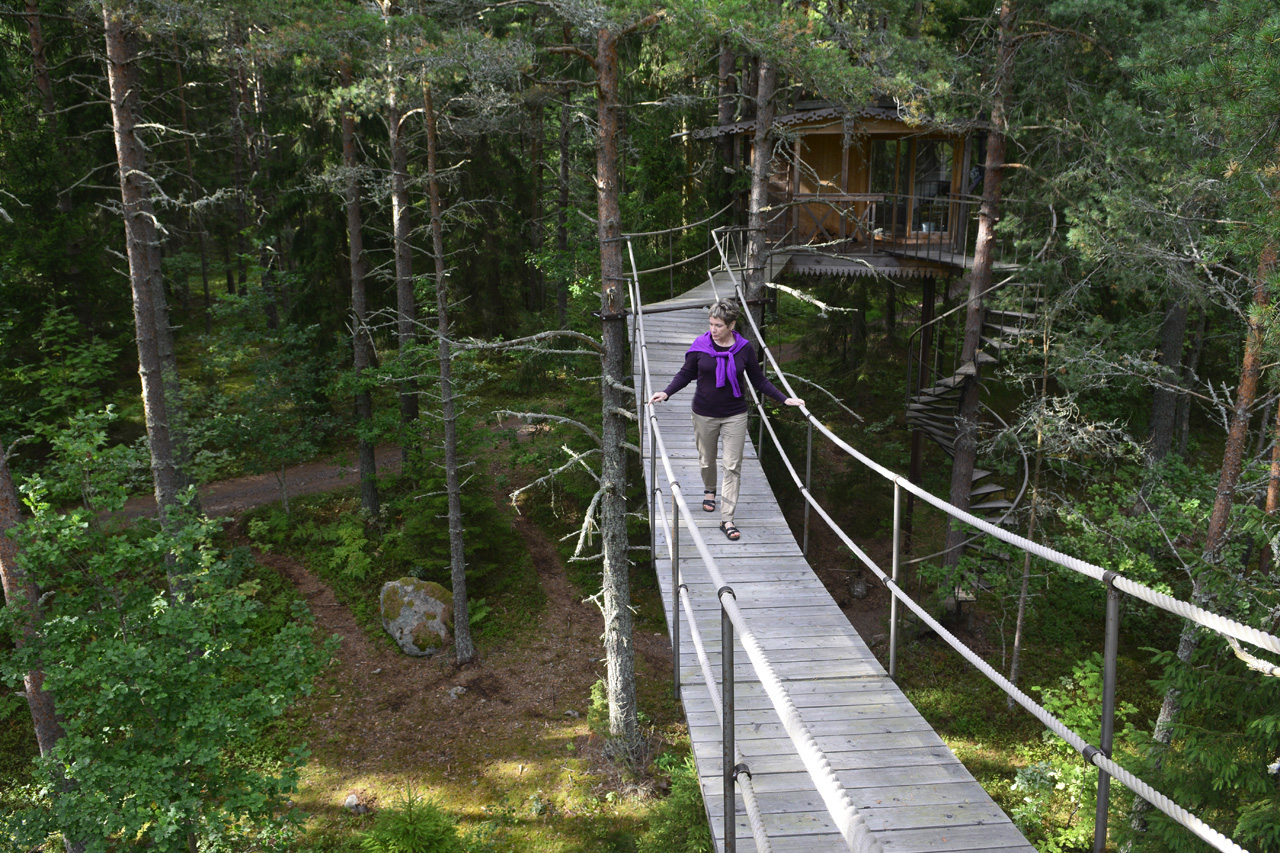 The air castle at Urnatur.
The air castle at Urnatur. -
As “perchers” rather than “nesters” (to use definitions picked up during a visit to Frank Lloyd Wright’s Falling Water), we had asked for this, the newest and highest of UrNatur’s two tree houses. Twenty-nine steps up a spiral staircase and we were at our temporary home halfway up a tall pine tree. A small roof deck perched on top of it, and a suspension bridge led to a nearby platform wrapped around another tree, and with two chairs and a small table. Now we just had to wait for twilight to light the kerosene lamp.
-
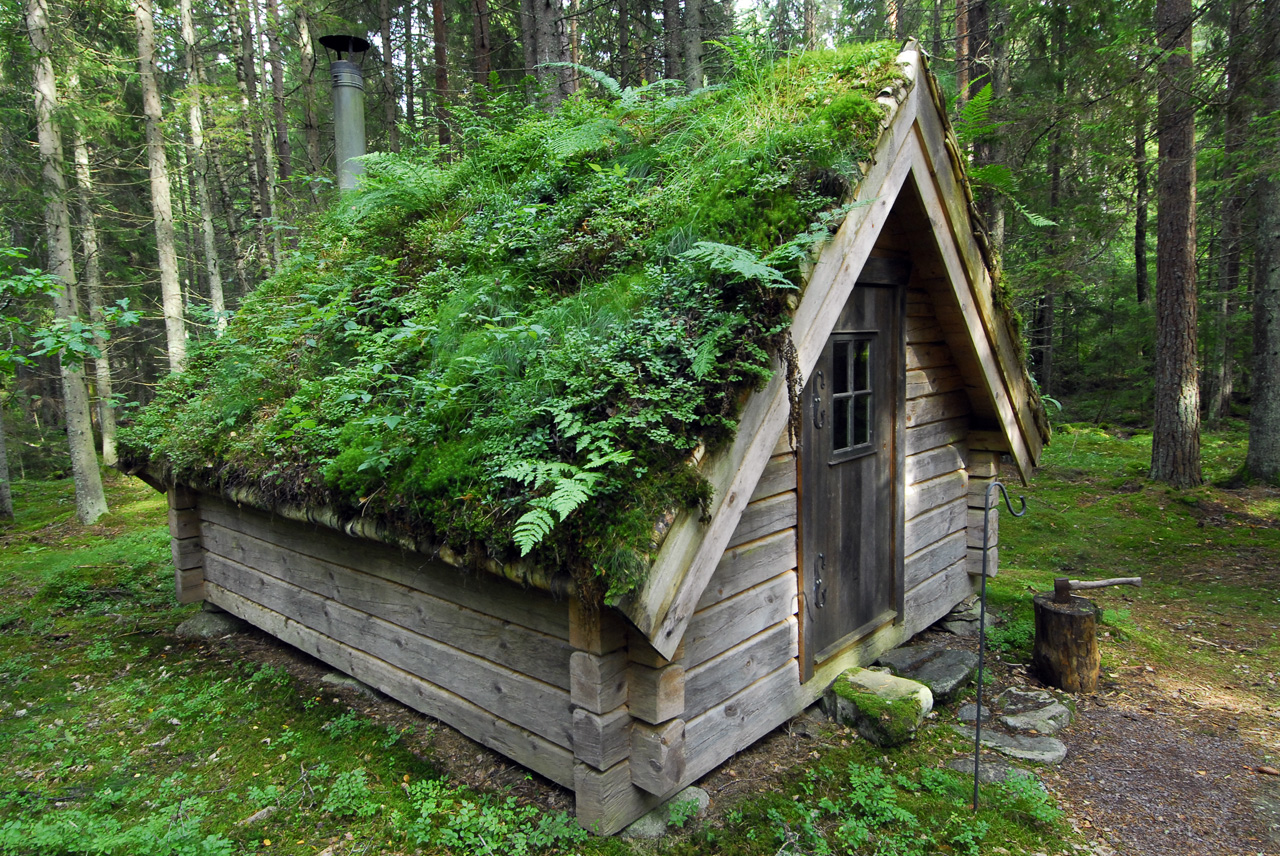
-
I mentioned that there was no electricity. All the toilets were outdoor wooden huts, impeccably clean, with little flower bouquets to make you feel extra pampered. The no-electricity rule did not, however, apply to the metal-roofed Tin Castle, UrNatur’s largest building. Here we gathered for wine, company and a delicious improvised dinner, which, with a little help from Håkan, was whipped up by Ulrika, and not surprisingly consisted of fresh ingredients appropriated from the farm.
Foraging, timbering, building a fire, using an axe and wood chopping — these are some of the classes offered at UrNatur, and which are part of its back-to-nature, back-to-basics agenda. Or you can borrow a rowboat or canoe and go fishing or sweat it out in the forest sauna.
The next morning, after a hearty breakfast we visited Ulrika’s studio, a spacious loft with a display of various furnishings: carpets, interior textiles, glass and more. I was struck by the utter simplicity of many of the patterns, all linked to nature with names such as “Seaweed, Jellyfish” and “Bark Beetles.” Before departing, we went for a short walk and found a young woman busily cutting down the upper branches of a tree. A pruning system called “pollarding,” this is yet another one of those things you can do at UrNatur. -
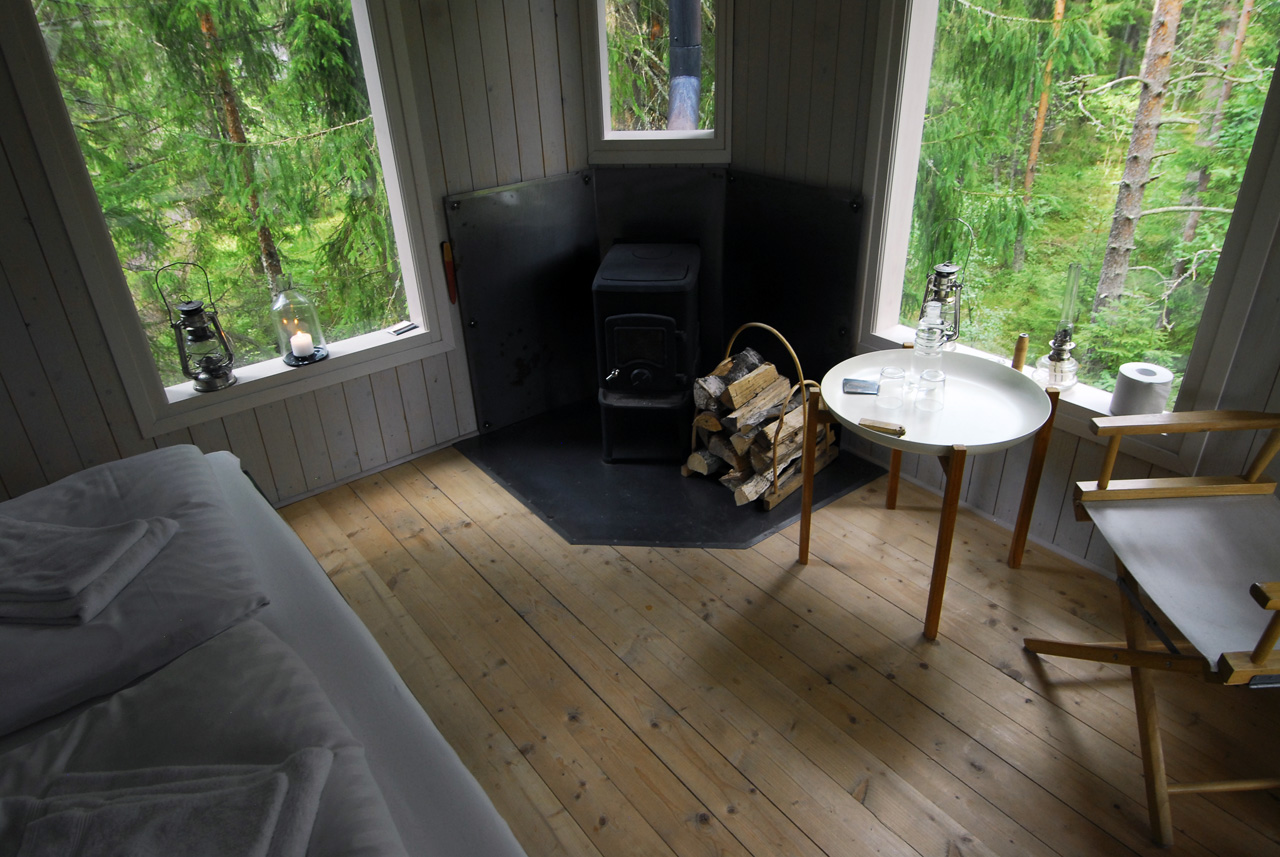 The view from our air castle at Urnatur.
The view from our air castle at Urnatur. -
Next stop: Gränna
Mention the name, and everyone in Sweden thinks of polkagrisar, the red and white candy for which the town has become famous. Though aware of Gränna’s popularity among tourists, I was amazed at the crowds lining the main street, not to mention lots of honking cars. We had just paid a visit to Brahehus, the ruins of the 17th century castle situated on the outskirts of town, and were now heading for the harbor, where the ferry to Visingsö, our final stopping point, awaited. On the subject of Gränna, we must not forget its famous son, August Andrée, who in 1897 with two companions, attempted to reach the North Pole in a hot air balloon. The town remembers him with a museum as well as a very popular annual balloon festival. -
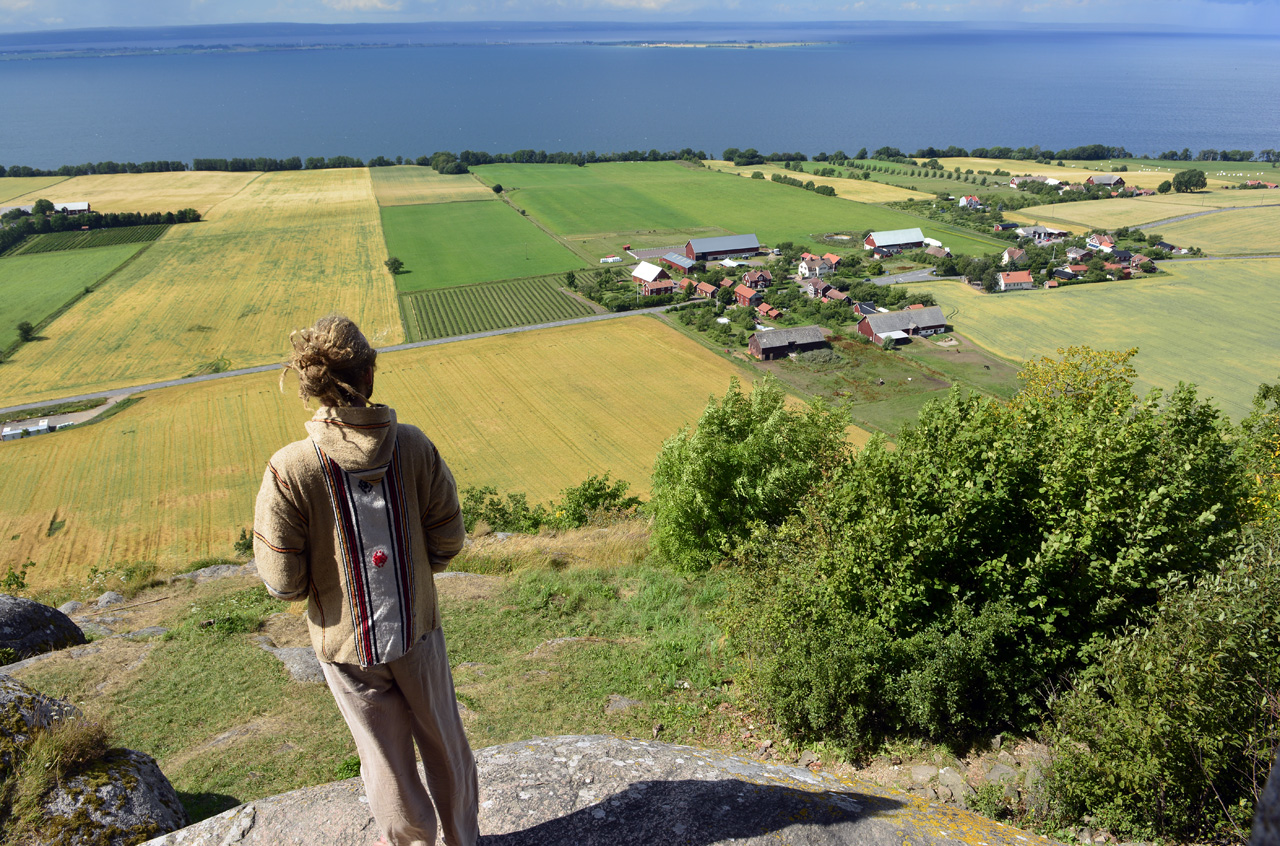 View of Lake Vättern and Visingsö from Brahehus.
View of Lake Vättern and Visingsö from Brahehus. -
So this was the tuft of grass that the giant Vist threw into the lake! Visingsö was pretty much as I remembered it from an earlier visit, except for the increased number of tourists. As I did 10 years ago, I climbed onto one of the rustic “Remmalagen” horse-drawn carriages for a tour of the island. Off we went, 20 passengers equally divided on the left and right side of the wagon, proceeding in a leisurely, clickety-clack fashion to various island sights. I recall an herb garden and a place where a couple hundred Russian prisoners of war were buried back in the early 1700s. And I remember passing through a beautiful oak forest before reaching the Kumlaby church, where we made a brief stop. Invited to visit the church’s high lookout tower, I decided to give it a miss after I got stuck with my camera bag in the incredibly tight space in a medieval stairway.
-
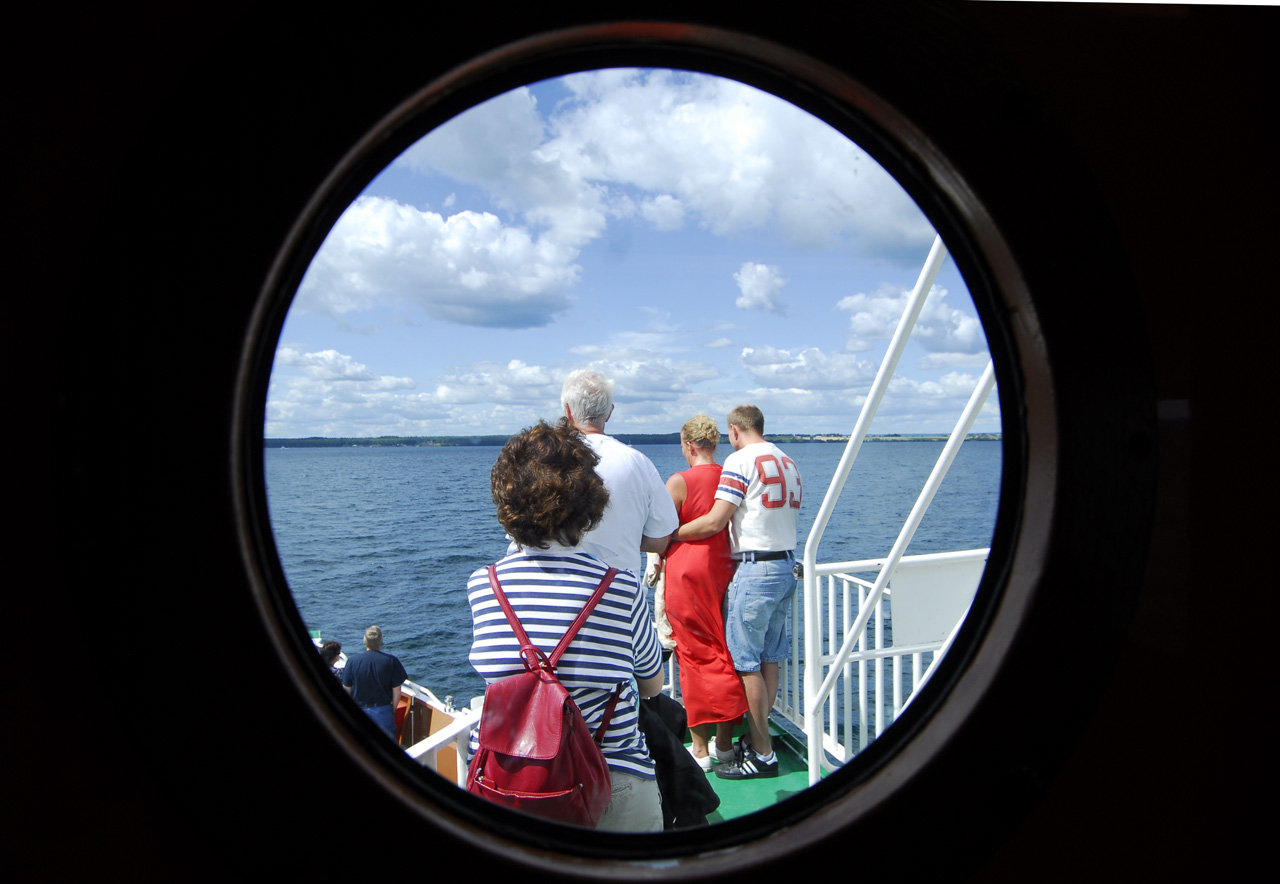 Visingsö in the center of Lake Vättern is less than a half hour’s ferry ride from Gränna.
Visingsö in the center of Lake Vättern is less than a half hour’s ferry ride from Gränna. -
Lunch at Café Solbacken came next. Here, at an outdoor table, overlooking the harbor and the old castle ruin, we dug into a summery salad with herb dressing and a generous serving of those delectable tiny shrimp you get only in Scandinavia. Smoked whitefish followed, complete with a creamy roe sauce, slices of red onion, and — of course — new potatoes.
-
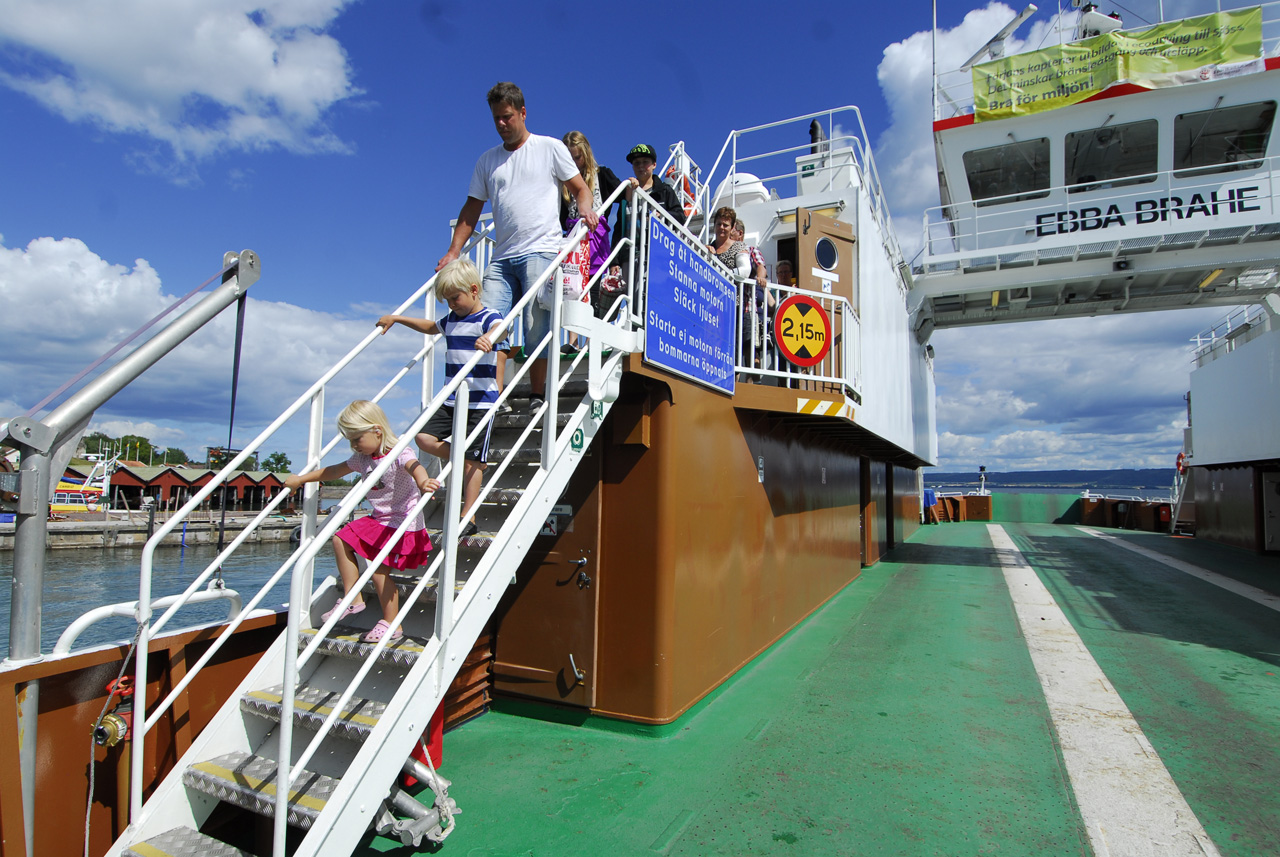 Visingsö in the center of Lake Vättern is less than a half hour’s ferry ride from Gränna.
Visingsö in the center of Lake Vättern is less than a half hour’s ferry ride from Gränna. -
Here ends our Vättern adventure: four days of history, unique accommodations and good food. It was also tinged with a bit of nostalgia since it was in this neighborhood we stayed overnight in Gränna during Roxie’s first visit to Sweden. For some reason we were offered the bridal suite, a lovely room with a superior view of the lake. And in the dining room, which we had all to ourselves, Roxie had her first taste of vätternröding.
She still raves about it. -
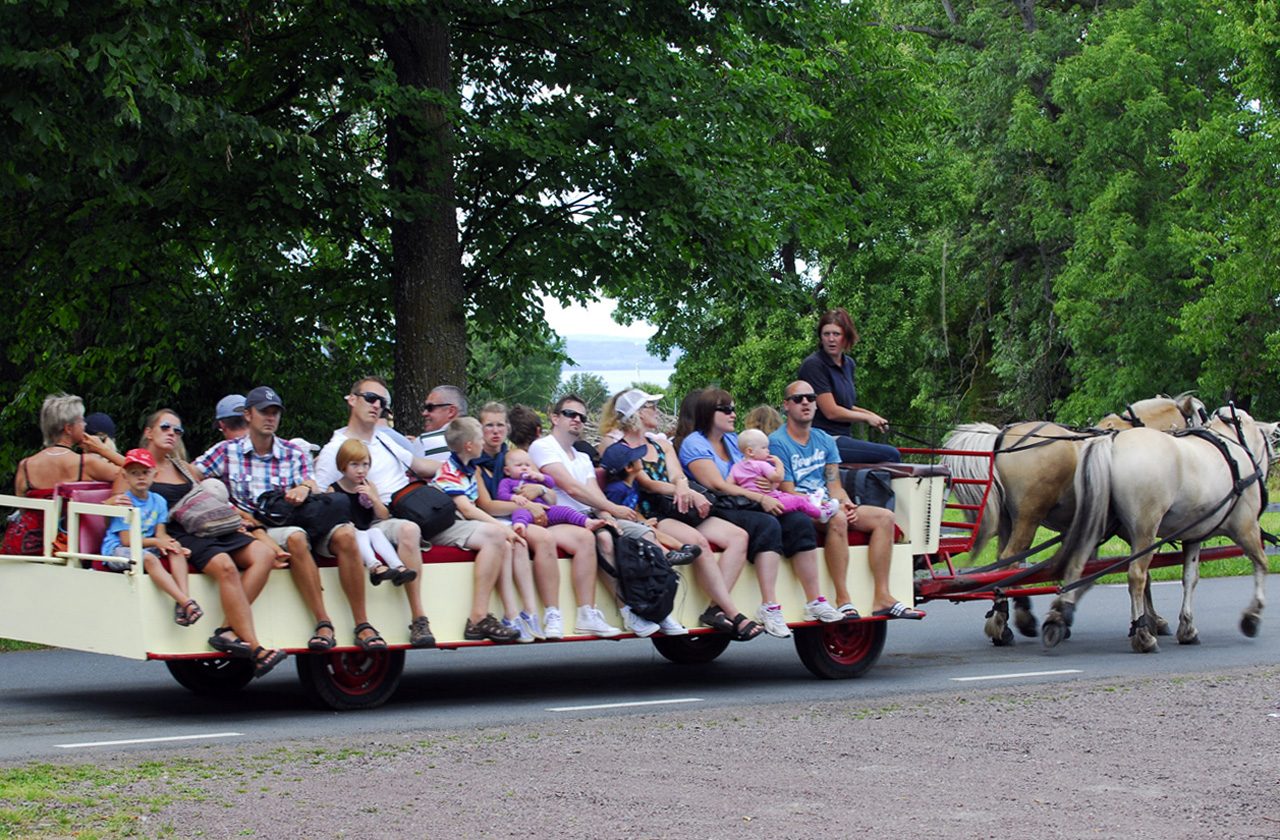 The horsedrawn “Remmalagen” carriages are the civilized way of getting around on Visingsö.
The horsedrawn “Remmalagen” carriages are the civilized way of getting around on Visingsö. -
(Part one appeared in the April 30 issue of Nordstjernan, No. 08. It can also be seen at http://www.nordstjernan.com/news/travel/6061/)
-
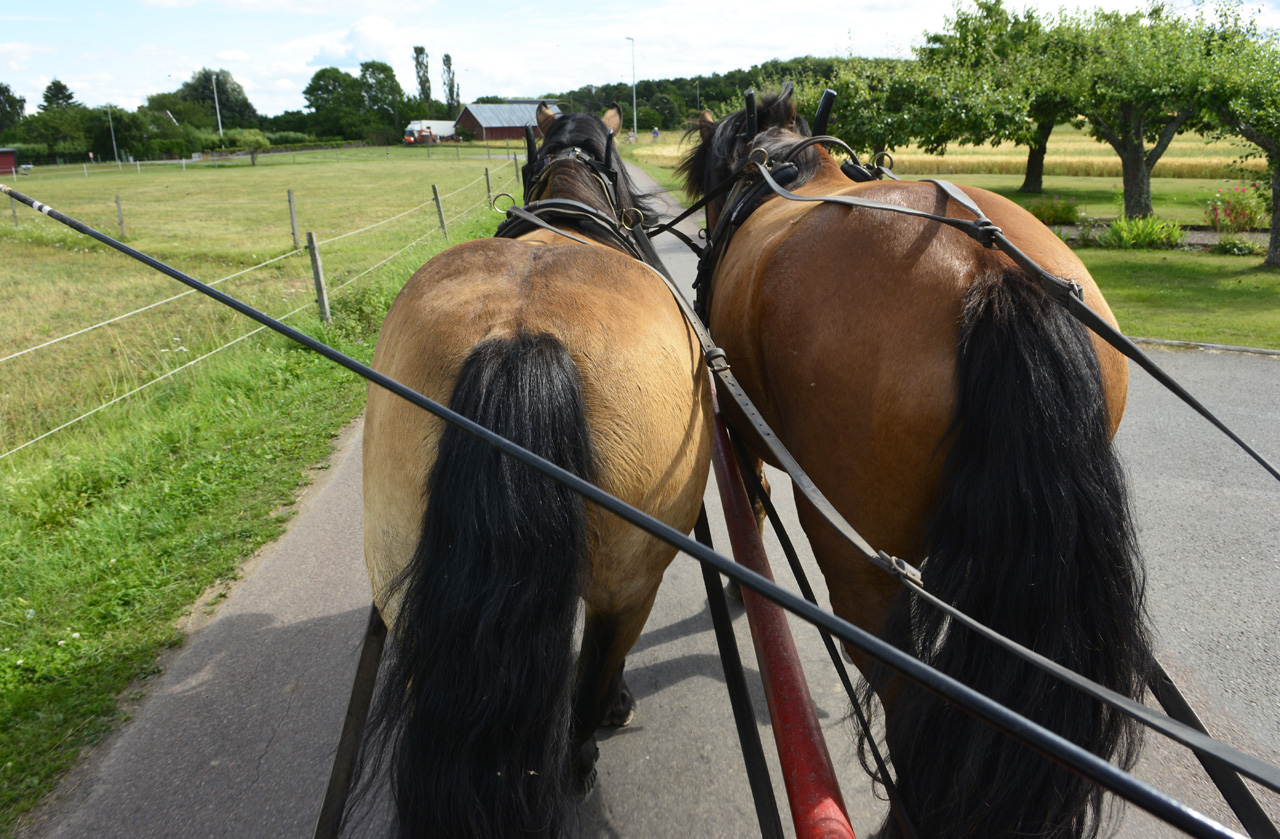 The horsedrawn “Remmalagen” carriages are the civilized way of getting around on Visingsö.
The horsedrawn “Remmalagen” carriages are the civilized way of getting around on Visingsö. -
-
-
